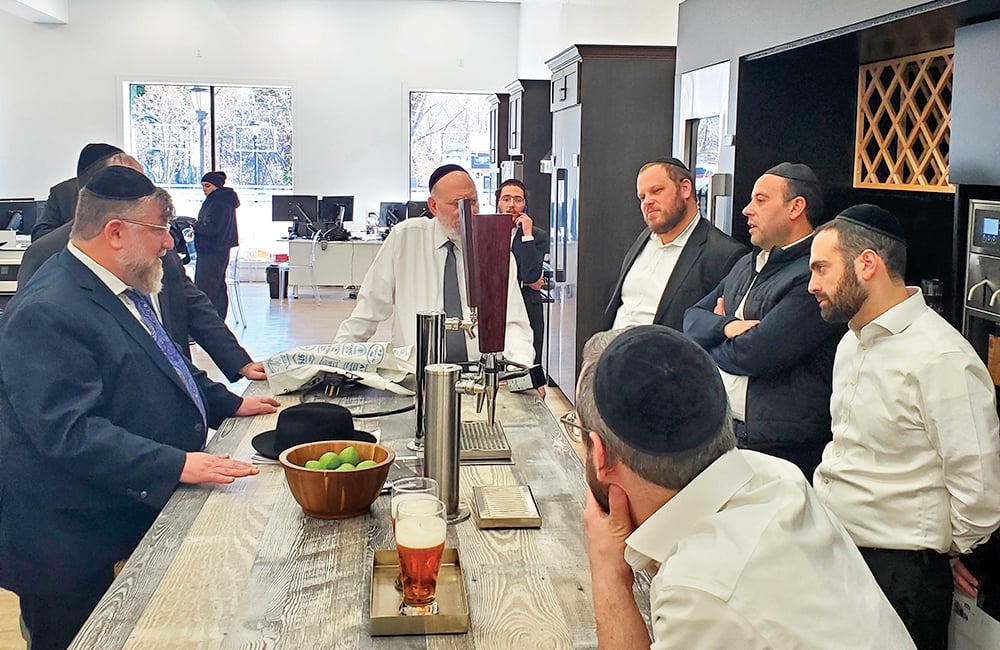
Part XV
In the August 1940 issue of The American Mercury, Eugene Lyons, a conservative journalist and editor of the centrist monthly, warned Americans to take Hitler’s pronouncements seriously. Not only was Hitler determined to rid Europe of Jews, he also planned to revise the social and economic institutions of the countries he conquered. “It was nothing less than a blueprint for a slave world,” Lyons declared.
As proof of Hitler’s intentions, Lyons produced quotations from the writings and speeches of the Fuhrer; Nazi theorists and “renegade” Nazi officials like Dr. Herman Rauschning, former President of the Danzig Senate; and Dr. Otto Strasser, one of the former leaders of the Nazi party. Furthermore, he pointed out that in the regions already under Nazi control, Hitler and his men transformed these stories into “the language of deeds.”
An Eyewitness Account From the Warsaw Ghetto
Though news of the establishment of ghettos in Poland including those in Warsaw, Minsk, Radom and Mazowiech appeared in the JTA, Congress Bulletin and The New York Times in January 1940, it was not until the beginning of October that Alvin J. Steinkopf, an Associated Press correspondent assigned to the Berlin bureau, was the first and only non-German journalist permitted to visit the General Government (Warsaw, Lublin, Cracow and Radom). Steinkopf spent a week touring the region by car, a journey of 1,000 miles, accompanied by Dr. Jost Wallbaum, an eminent Berlin physician and director of health in the General Government, and by Dr. Hans Klaevcke of the German Medical Chamber.
In a report from Warsaw on October 12 published in the Times the next day, Steinkopf said “the Jews walk down the streets in white and blue armbands. They are their tags of identification, and every one of them must wear them on their right sleeves.” The Germans erected a new concrete wall around the ghetto that was eight feet high, and “so tight a cat couldn’t get through it.” The “ghetto surrounds the central district comprising of 100 or more city blocks into which the population is crowded with astonishing density, and closes off 200 streets and even street car lines—it is built right over the rails.”
By stationing 18 policemen at the entrances to the ghetto, the Germans could seal off the entire areas, preventing the half a million Jews from leaving the district.
The Germans claimed the wall, “which they say is unique in modern times,” was not constructed as an anti-Semitic act, but simply as a “desperate health measure necessary to protect Poles and Jews alike from the pestilences which [were] likely to follow in the wake of a total war.” Although there had been 58 cases of typhus when Steinkopf was in Warsaw, 30,000 of the half million Jews and Poles in the ghetto had become infested with the disease several months before. Fifty-eight cases of typhus would have alarmed any American city, yet in Warsaw, it had not been considered extraordinary under the present situation.
Response to the Warsaw Ghetto Wall and Other Revelations
On November 16, 1940, the day following the official closing of the ghetto gates of Warsaw, the women of Poland made a public appeal quoted by Der Tog on November 28 and by the Congress Bulletin on December 5. It read: “Our husbands, our brothers and fathers perished in mass murders which wiped out tens of thousands. They die slowly in dungeons or perish from starvation and cold in war prisoners’ camps…. We are living in hell….This hell is all around us—it is smothering us and we are its helpless victims….Before God almighty, we swear that our words are true and that our accusations are not exaggerated.”
In the December 6 issue of the Congress Bulletin, the American Jewish Congress rejected the Nazis’ official explanation for establishing the ghetto wall. The Congress declared the Germans wanted to transform the area into “a sewer of pestilence to consume those who refuse to commit suicide.” The American Jewish Yearbook, published by the American Jewish Committee, quoted the Committee’s accusation that the wall forced Jews to “live under indescribably wretched conditions, and the establishment of virtual ghettos in other large cities in Poland” were a portent “of Nazi plans for all Jews who come within their reach of Nazi control.”
In addition to these revelations, there were many other appalling reports about Jewish life in Eastern and Central Europe. The JTA on January 15, 1940, and the Contemporary Jewish Record in the March-April edition of the magazine, published an affidavit by Dr. Henryk Szoszkes, former vice-president of the Warsaw Jewish Community Council, in which he charged that the Nazis had ordered him to establish two military brothels in Warsaw and to supply Jewish girls for them. Copies of the affidavit were submitted by Dr. Szoszkes to the Polish Embassy, the American Jewish Committee and the American Jewish Congress.
When this author discussed Szoszkes’ report with Professor Yisrael Gutman, a leading Holocaust historian at the Hebrew University, who belonged to the Jewish underground in the Warsaw Ghetto and the Jewish Fighting Organization (ŻOB) during the ghetto uprising, he questioned whether the account was accurate. At the time, American Jewry accepted the report as being true.
By Alex Grobman, PhD













